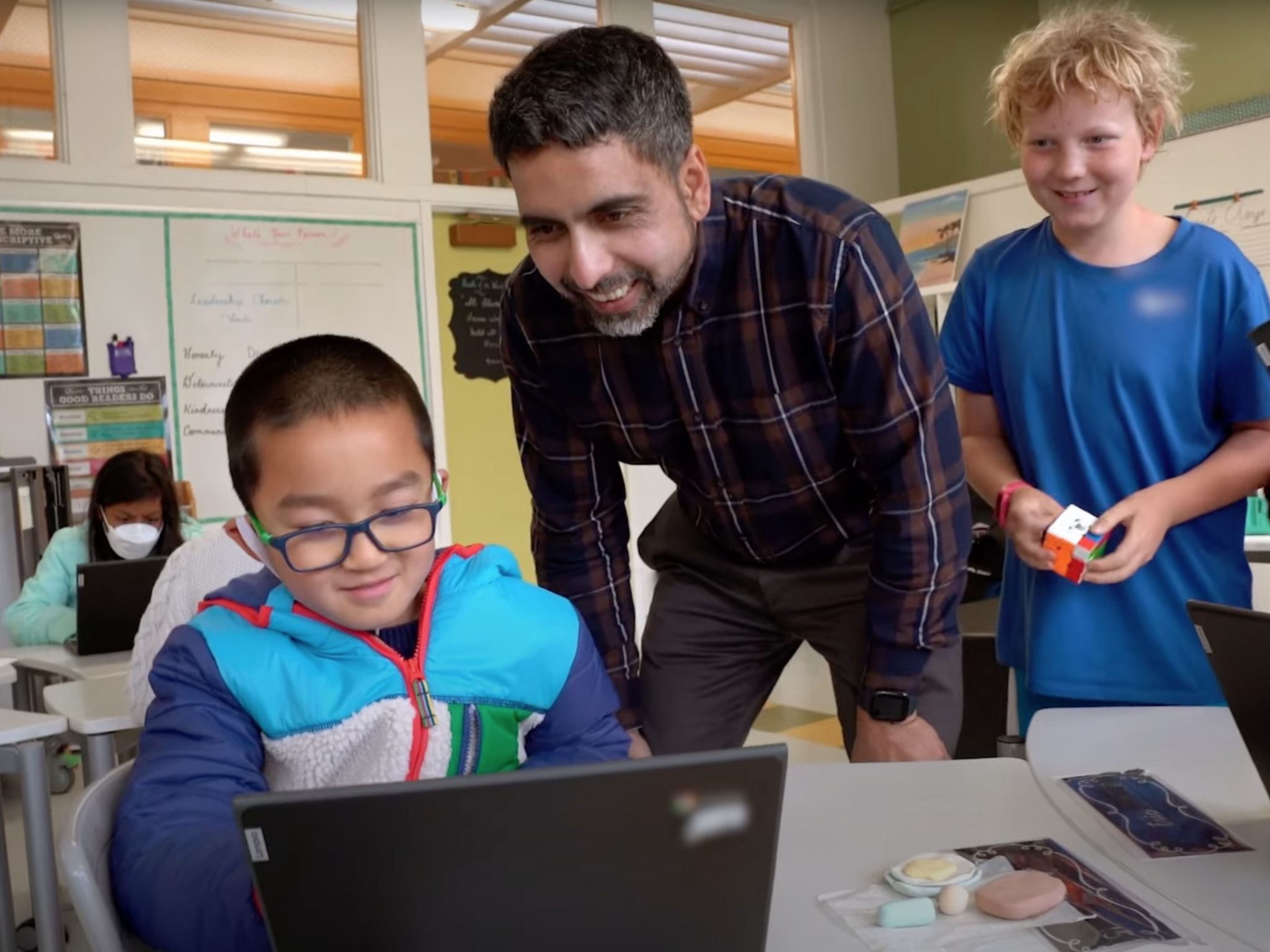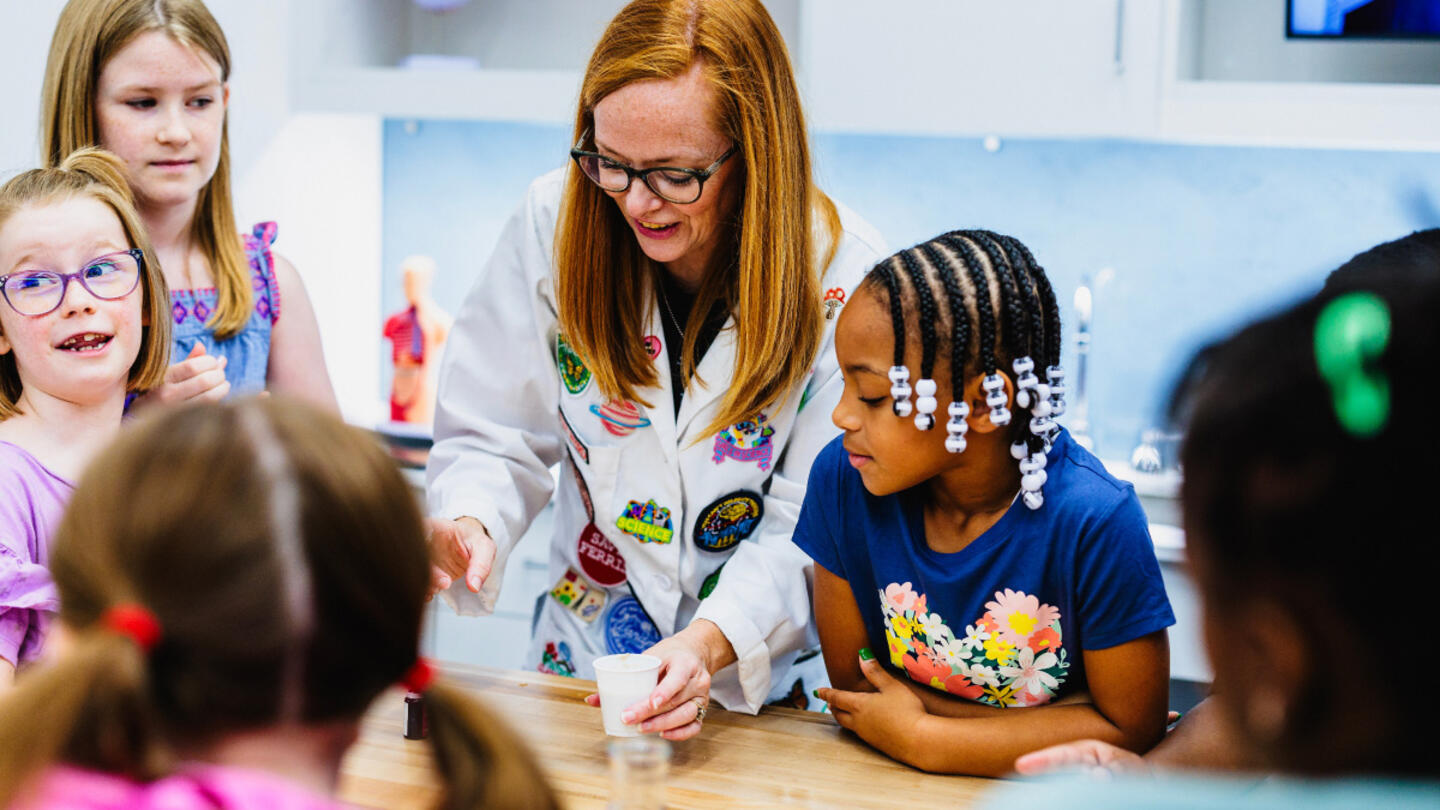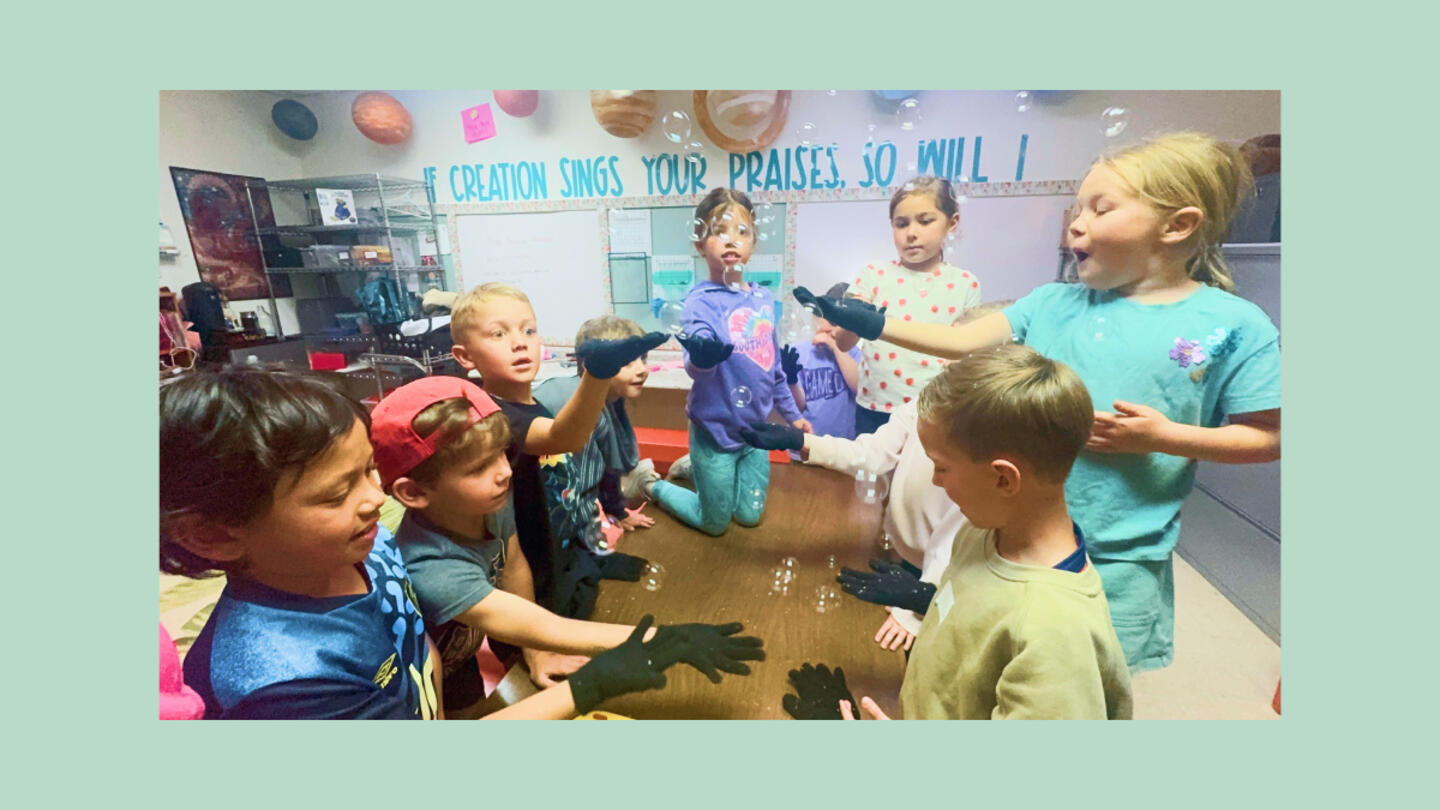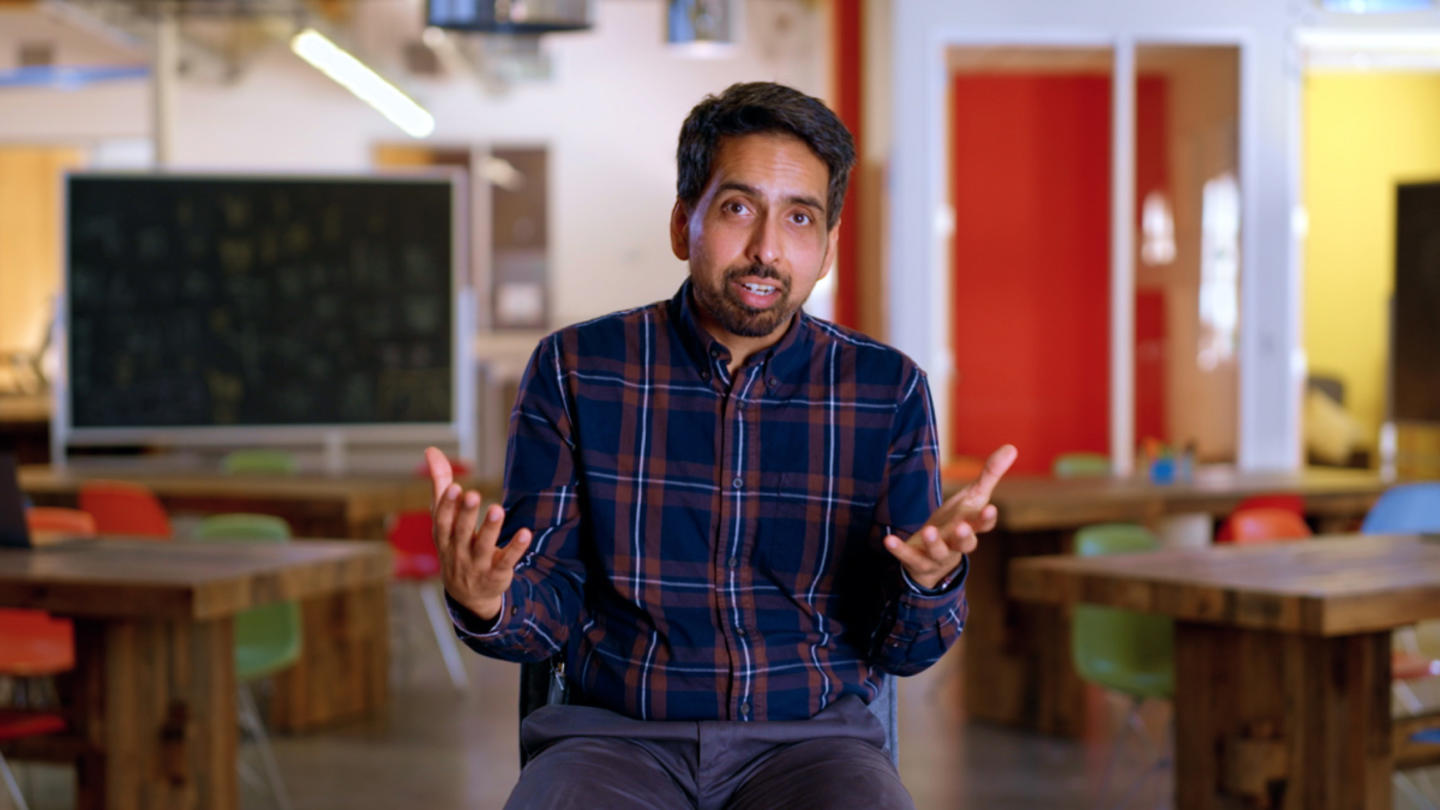Today’s education system has a bit too much in common with a 1960s computer: Both are bulky, inaccessible, and impersonal.
But while the education system has remained largely unchanged over the decades, computers have not. The personal computing revolution was spurred by the invention of the Standard Operating System, which transformed computers into something easy and intuitive for people to use in their everyday lives.
Why? Because these systems were individualized. Khan Academy’s founder says it’s time for education to do the same.
Khan Academy is a free online educational platform that provides individualized learning to over 150 million students across the globe — and now, founder Sal Khan wants to spread that model even further.
“Before, if you wanted to put together a school or curriculum, good luck,” he said. “You were reading catalogs, putting stuff together, writing stuff together. And then all of that work that you did, that’s not going to be portable to someone else’s school. What we’re hoping to do with Khan Academy is productize individualized education, in the same way that an operating system does. Let’s make it so that it’s very easy for everyone to use it, and it’s portable.”
“What if you could give every school in America a software update that could uplevel what they do in a very dramatic way?” Khan continued. “Introduce more personalization, more mastery, more rigor?”
To make that dream a reality, Khan is harnessing the power of generative artificial intelligence in new and innovative ways. And it’s working.
“Our mission is free world-class education for anyone, everywhere,” he said. “This is a time to swing for the fences.”

If students are able to practice at their own pace, these students are growing 30%, 40%, 50% faster than they would have otherwise.”
Sal Khan
Founder, Khan Academy
Khan Academy discovered the power of individualization long ago: The platform has a long track record of using personalized models to empower students along their learning journeys. Now they’re hoping to take individualized learning even further.
Khan Academy uses tools like on-demand video and personalized practice to encourage personalization and mastery learning in students. There are over 50 efficacy studies on Khan Academy, and according to Khan, “all of them say essentially the same narrative. That if students are able to practice at their own pace, these students are growing 30%, 40%, 50% faster than they would have otherwise.”
But Khan Academy’s reach hasn’t infiltrated as many schools as they’d like. Many schools across the country still aren’t able to access the benefits that come from implementing this kind of personalized learning model.
“Right now, a majority of schools don’t offer courses that most of us would take for granted,” said Khan. “And when they do, they’re watered down and don’t allow for real personalization and mastery. There are kids in our inner cities, there are kids in rural America who are not able to tap into their potential because the resources aren’t in their community.”
This has reverberating effects on communities, cities, and workforces at large. Everyone suffers when their local youth aren’t put on a pathway that will allow them to grow using their strengths and talents to become the best version of themselves.
Khan Academy knows that individualized learning allows students to do just that. But the task at hand is a tricky one: how do you scale for something as non-standardized as individualized education?
What would schools powered by Khan Academy actually look like in practice?
The organization’s goals are lofty. In the next five years, it hopes to make all core academic subjects, on levels from pre-K through college, available at a world-class level to every student in America. Whether it’s algebra, geometry, AP World History, environmental science, or any other topic, Khan Academy wants it available and accessible in a way that supports personalization and mastery learning.
What’s more, this could be inclusive of a whole new population of learners and their families. Making this range of curriculum so widely available — accessible from any device, including cell phones — could broaden the scope of Khan Academy beyond traditional schools. A variety of educational models could have access to individualized learning methods, including homeschools, microschools, hybrid models, and everything in between.
This proposition brings two simultaneous innovations to the forefront: individualized education and AI. Khan Academy has already experimented with using AI to bolster individualized education through their new tool, “Khanmigo.”
“What AI allows us to do is scale to anyone, anywhere,” said Khan.
AI acts as a Socratic tutor that students can interact with. For instance, an AI system can challenge a student to consider different approaches to problem-solving and walk them through steps to finding the answer to a question. It can even simulate historical characters, allowing students to have “conversations” and debate with the likes of Shakespeare, Napoleon, and Amelia Earhart. Students can get direct feedback from the AI, in real time.
“It’s also going to be able to motivate them when they get a question wrong, proactively saying, ‘Hey, this isn’t a big deal. When you get questions wrong, this is actually when your brain grows the most. This is a moment to reflect and then to be resilient and move forward,’” Khan explained. “It’s helping students’ self-esteem and their ability to believe that they can tackle the material because they feel supported now.”
While it might seem like AI is replacing the role of teachers, it's actually providing additional support to them. Teachers can use Khanmigo to create assignments and receive detailed reports on students’ results and thinking processes.
“If teachers can save five, ten hours a week with lesson plans and grading because of AI, that’s more energy for themselves,” said Khan. “We know we have a teacher shortage. We have a burnout issue, and just as important, it’s more energy for them to be student-facing, to support their students even more.”
The bottom line? This model can provide mutual support to students and teachers alike, allowing both parties to unlock their skills and talents, and pursue their highest level of potential.
Sign up for Stand Together's K-12 newsletter and get stories, ideas, and advice from changemakers who are transforming education across the country.
Reaching a billion students with one classroom. It’s real.
In the next five years alone, Khan Academy could reach as many as a billion students across the world.
Personalized learning could lead us into the next era of human progress. With more learners across every demographic empowered to reach their full potential, communities will be strengthened by workforces made up of driven, intentional individuals actively working to use their unique strengths to their fullest.
“As we’re able to build out the content on Khan Academy, as we’re able to add layers of things like artificial intelligence, we think we can increase our impact by at least a factor of 10 and probably increase our reach by a factor of 10,” Khan said. “We could be talking about a social benefit-to-cost ratio that’s 10,000-to-1, 100,000-to-1.”
In other terms?
“Imagine a world where literally anyone on the planet has access to the best education. This isn’t a nice-to-have. This is a must-have.”
Khan Academy is supported by Stand Together Trust, which provides funding and strategic capabilities to innovators, scholars, and social entrepreneurs to develop new and better ways to tackle America’s biggest problems.
Learn more about Stand Together’s education efforts, and explore ways you can partner with us.

‘We want these boys to know that regardless of where they come from, they still can be excellent.’

This colearning space has the potential to bridge the divide between public and private education.

New Johns Hopkins data shows homeschooling’s recent surge has transformed the education landscape.
Step 1: Find the best learning environment for your child. Step 2? Figure out how to pay for it.
